The Zpacks Duplex Lite is a 2-person single-wall trekking pole made with Dyneema (DCF) that weighs 14.9 oz (423g). It’s a slimmed-down version of the Zpacks Classic Duplex tent, with a 40″ wide floor that’s spacious for one person or two good friends with standard-width 20″ sleeping pads. In addition to smaller dimensions, the Duplex Lite uses a lighter-weight grade of Dyneema material for its floor, so you’ll lose some durability in exchange for less weight and slightly better packability. While Zpacks claims you don’t need a footprint with the Duplex Lite, it’d be something to consider if you camp on highly abrasive soil and will only add a few ounces if you use something like window wrap. Dyneema DCF floors do develop pinholes eventually and leak, and while they can be patched with Dyneema repair tape, finding the holes is a bit of a production.
- Weight: 14.9 oz / 423g
- Type: Single wall tent
- Structural: Non-freestanding, trekking pole tent
- Capacity: 2 people
- Doors/vestibules: 2/2
- Exterior Dimensions w/ vestibules: 88″ (w) x 100″ (l) x 48″ (h)
- Interior Dimensions: 40″ (w) x 90″ (l) x 48″ (h)
- Packed Dimensions: 5″ diameter by 11″ tall (3.5L)
- Canopy Material: 0.55 oz/sqyd Dyneema Composite Fabric
- Floor material: 0.75 oz/sq-yd Dyneema Composite Fabric
- Pockets: 0
- Seam-taped: Yes
- Tent Stakes: Not Included
- Pros: Weights less than a pound, doesn’t sag when wet,
- Cons: Translucent material is less private, single wall construction is prone to internal condensation
The Duplex Lite has a classic A-frame design with a rectangular footprint, two doors, and two vestibules, making it easy to pitch without worrying about which direction the ends are facing. It requires two trekking poles to pitch, with the handles pointing up since there isn’t a grommet or extra material in the peaks to prevent the poles’ carbide tips from puncturing the material.
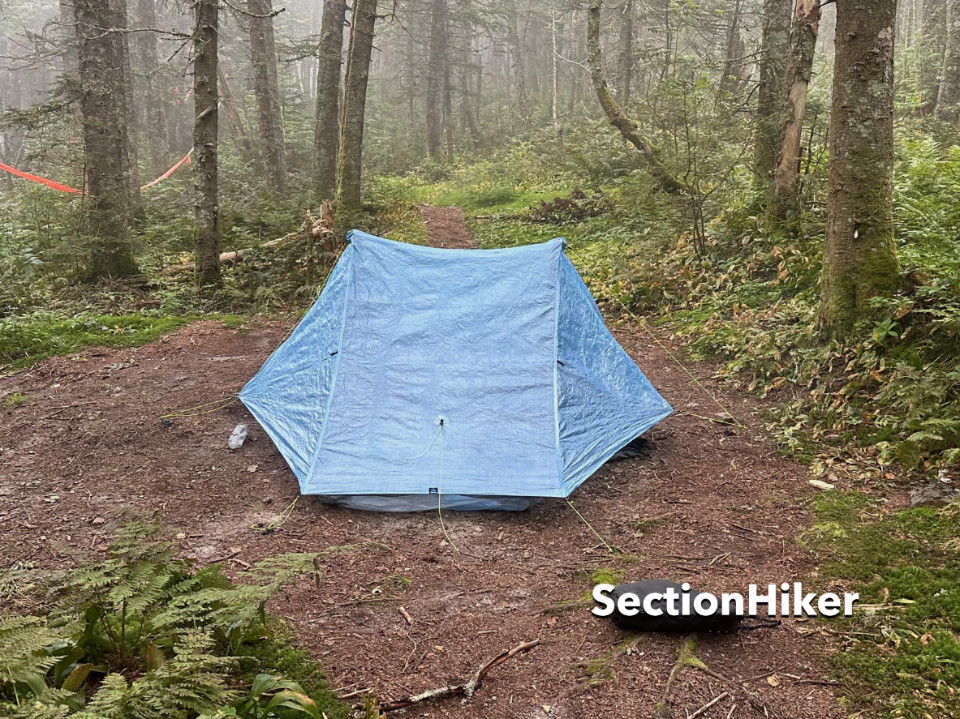
The Duplex Lite requires a minimum of six guylines and stakes to pitch, four at the corners and two for the peaks. All the guylines are precut and connected with line loc adjusters, making it easy to tension the lines without knots or additional hardware. Two additional guy-out points on the roof panels can be optionally staked out to create more shoulder room inside the tent. This is best done by tying them to a pair of additional trekking poles or sticks to pull the panels out horizontally instead of staking them directly to the ground at an angle.
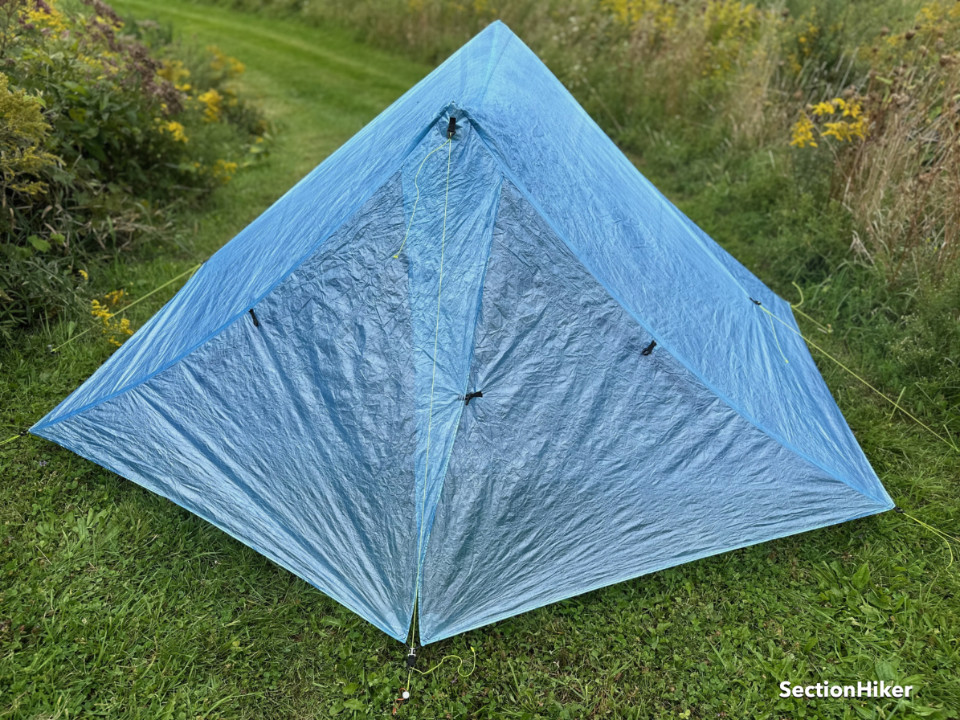
Each vestibule has two doors that can be rolled back together or independently, held open by dowels. The doors overlap to block weather rather than being joined by a zipper, eliminating a potential point of failure. An external dowel is also available to hold them closed, but it is not reachable from inside the tent. The vestibule doors are staked out using the same guyline as the peaks, using a special trident-shaped piece of hardware that hooks onto rings at the base of the doors. The vestibules are not terribly wide, but you can usually keep your backpack under cover.
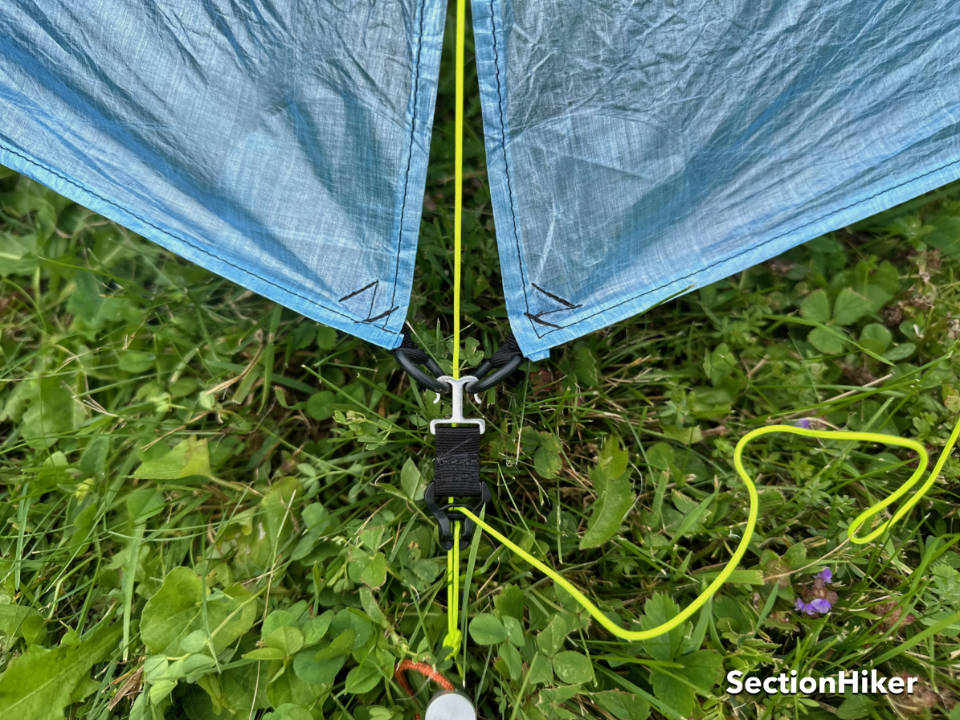
The inner mesh tent doors are vertical rather than slanted and have doors with rainbow zippers, which is nice because they let you exit by either side of the vestibule. Many tents have screen doors that only open on one side of the vestibule, affecting pitch orientation. The mesh is very fine and protects against insects of all sizes.
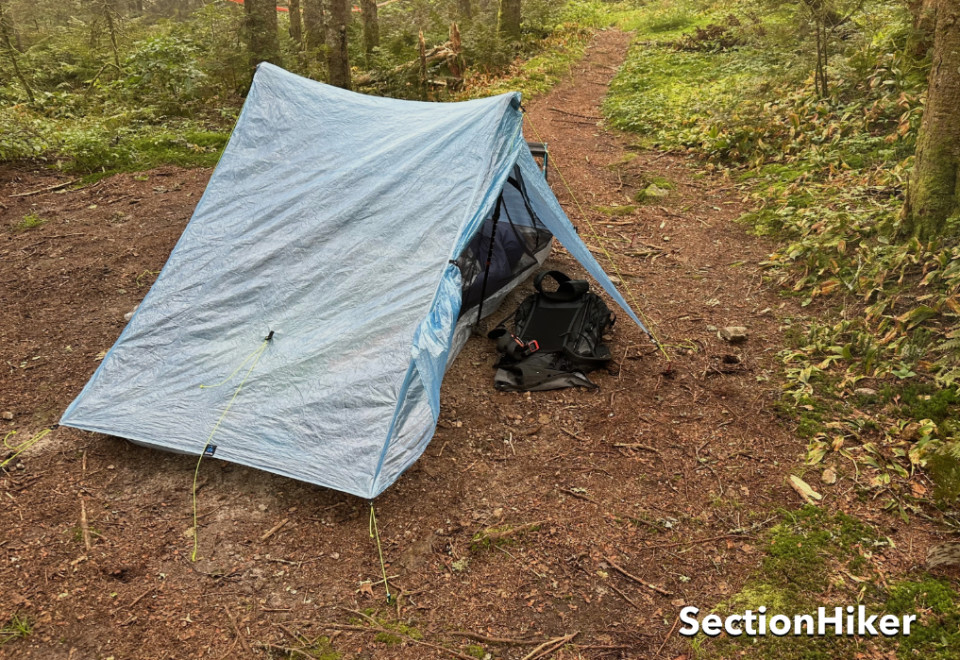
The bathtub floor is 6.75″ deep, which helps prevent running water from entering the tent. It is attached to the side walls and door with mesh, so it can “float” over uneven surfaces while providing ventilation along the tent’s sides and ends. The height of the bathtub will vary, though, depending on the height you set your poles, since the mesh sidewalls and doors hang from the ceiling. The recommended pole height of 48″ creates a large air gap under the vestibules and sides of the roof for ventilation. While there is enough overhang between the roof and the floor to prevent rain from splashing back inside the tent, you can lower the poles in stormy weather to reduce airflow through the tent.
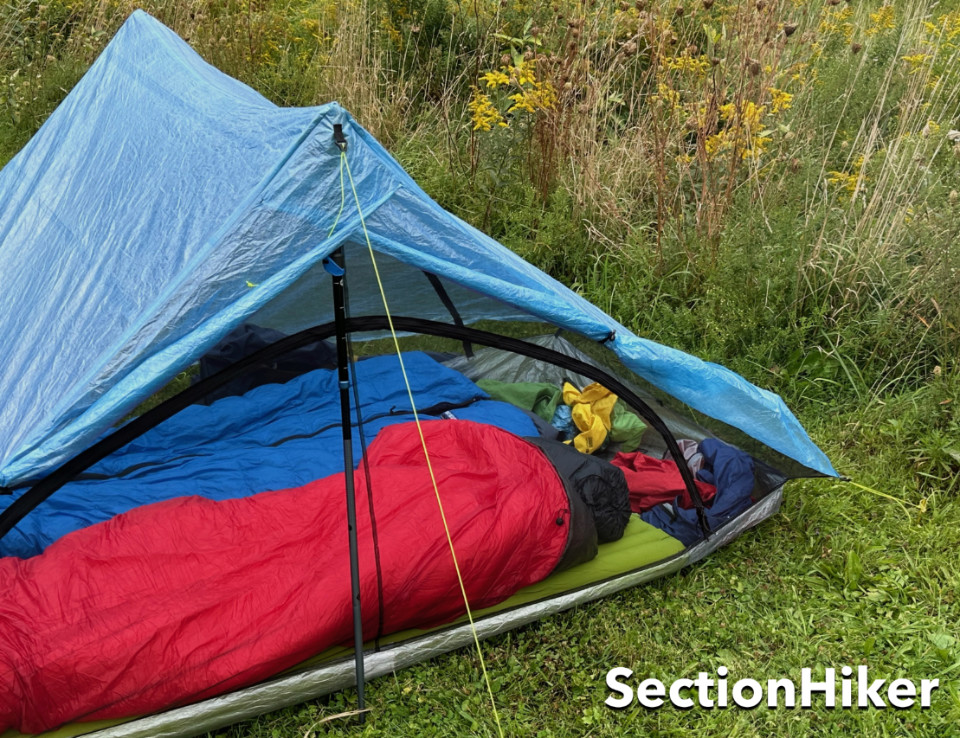
With 40″ of internal width, there is enough room to hold two 20″ wide inflatable sleeping pads, even untapered ones, since the tent floor is a true rectangle. With 90″ of internal length, there is extra storage at the head/and or foot end of the tent to hold incidentals or footwear. The overhead space is equally good when lying down, and you can sit up completely in the center of the tent under the tent ridgeline.
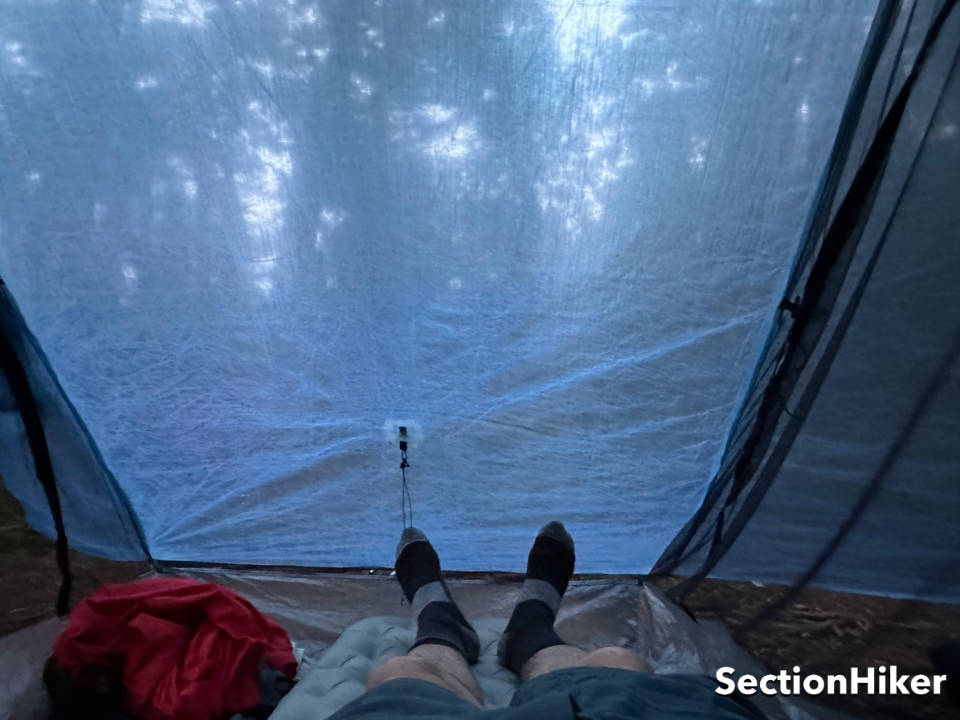
Unfortunately, there are no pockets on the tent’s interior. Granted, the center pockets (attached to the sides of the bathtub floor below the doors) on the other Zpacks Duplex variants are poor for safely securing glasses or phones, so this is no great loss. But you must be VERY careful not to crush delicate eyewear or electronics when using any of the Zpacks Duplex tents. In the Duplex Lite, as in the other Duplex Models, the best place to hang a pair of glasses is from the cords attached to the door zipper when positioned vertically. This also makes it easy to find them at night.
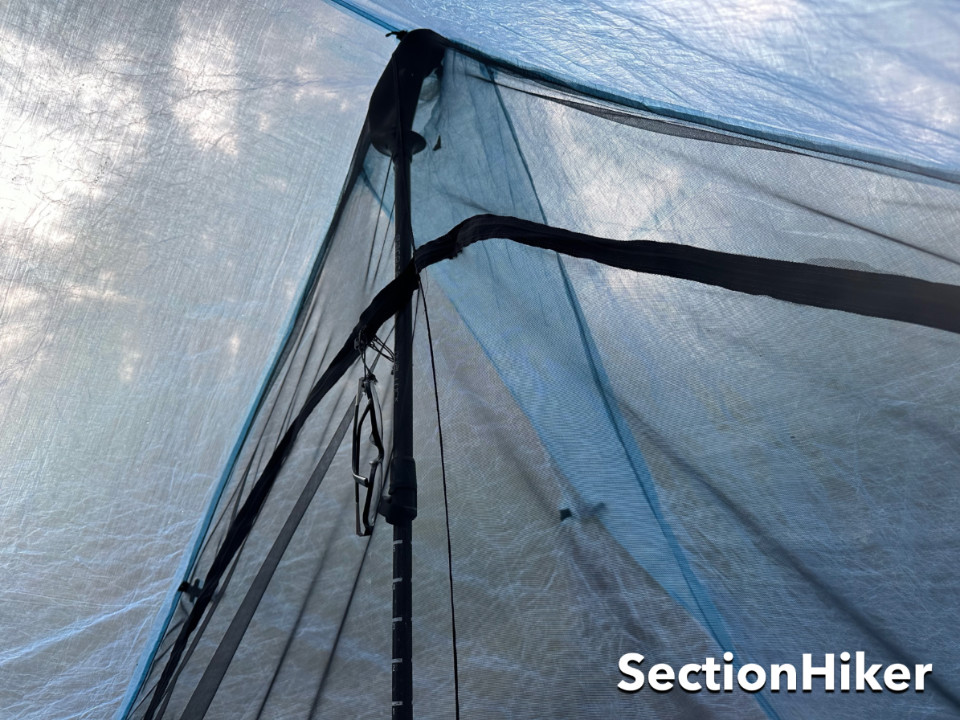
Duplex Comparison
The Duplex Lite is a great option if you want to own one ultralight tent for solo use that can also be used with a partner. At 14.9 oz, it’s a palace for one that lets you store all your gear inside the tent. It also has a smaller pitching footprint than the original Duplex Classic, making it easy to erect in smaller tent sites, although it’s incompatible with the Duplex Freestanding Flex Kit. The Duplex Lite is also a fine option if you regularly camp with a partner, with as much width (40″) as many conventional two-person tents.
| Tent: | Duplex Lite | Duplex Classic* | Duplex Zip* |
|---|---|---|---|
| Weight: | 14.9 oz / 423 g | 17.9 oz / 507g | 19.6 oz / 555g |
| Price: | $669 | $699 | $729 |
| Exterior (LxWxH): | 88″ x 100″ x 48″ | 93″ x 100″ x 48″ | 93″ x 100″ x 48″ |
| Interior (LxWxH): | 40″ x 90″ x 48″ | 45″ x 90″ x 48″ | 45″ x 90″ x 48″ |
| Packed Size: | 5″ x 11″ (3.5L) | 6″ x 12″ (5.6L) | 6″ x 12″ (5.6L) |
| Bathtub Floor Height: | 6.75″ | 8″ | 8″ |
| Interior Pockets: | 0 | 2 | 2 |
| Peaks Vents: | 0 | 0 | 2 |
| Vestibule Zippers: | 0 | 0 | 2 |
| Canopy Material: | 0.55 oz/sqyd DCF | 0.55 oz/sqyd DCF | 0.55 oz/sqyd DCF |
| Floor Material: | 0.75 oz/sqyd DCF | 1.00 oz/sqyd DCF | 1.00 oz/sqyd DCF |
| * Minimum weight shown. Heavier canopy colors are available |
The Duplex Classic is a better option if you regularly camp with a partner and/or prefer a tent with more width (45″), especially when using a two-person sleeping pad. The Classic has slightly larger vestibules for external gear storage, a deeper bathtub floor, and mesh pockets, one on each side, below the door. The Classic is also available with heavier canopy materials (depending on the color chosen) which are less translucent and more private. In addition, it is compatible with the Duplex Freestanding Flex Kit.
The Duplex Zip is virtually identical to the Duplex Classic but is more weather-worthy. It has magnetic door toggles, vestibule door zippers, and peak vents, which can help reduce internal condensation even when the vestibule doors are closed. It, too, is available with heavier canopy materials (depending on the color chosen) that are less translucent and more private. It is also compatible with the Duplex Freestanding Flex Kit.
Recommendation
The Zpacks Duplex Lite is a 14.9 oz single wall trekking pole tent made with DCF (Dyneema Composite Fabrics). Large enough for two people and a palace for one, it’s a good backpacking tent for camping in well-protected locations with soft ground cover, although easily augmented with an ultralight footprint to protect the floor when pitched on more abrasive surfaces. Couples requiring more space, privacy, or weatherworthiness should select the Duplex Classic or Duplex Zip, with a little weight penalty.
Disclosure: Zpacks donated a tent for review.
SectionHiker is reader-supported. We only make money if you purchase a product through our affiliate links. Help us continue to test and write unsponsored and independent gear reviews, beginner FAQs, and free hiking guides.
